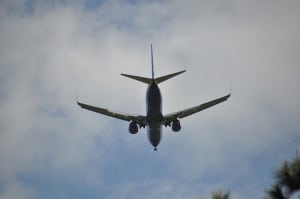Latest News
[Via Satellite 09-29-2014] Inmarsat sees an Air-to-Ground (ATG) network serving as the centerpiece for its In-Flight Connectivity (IFC) plans in high traffic areas. Speaking during Inmarsat’s Sept. 24 Investor Day, Leo Mondale, president of aviation at Inmarsat, said this realization was hard to embrace initially, but has been now accepted as a necessary step.
“There’s just no comparison,” he said. “When you start from the ground you can split the frequencies and focus the energy much more than you possibly can from 35,000 kilometers up in space. It wasn’t easy for a company with satellite DNA like Inmarsat to convince ourselves that this is the right solution, but if you’ve got the traffic density, there is no doubt about it.”
Inmarsat is planning a large ATG network spanning across all 28-member states of the European Union (EU). Mondale admitted the success of Gogo’s U.S.-based ATG network and the decision by AT&T to build another in the U.S. weighed heavily on Inmarsat’s decision. Both the high number of flights that crisscross the European continent and the projected number of new aircraft from Boeing and Airbus provided the stability Inmarsat needed to begin with the project.
Mondale said one of the five largest markets out of the 28 EU members has approved the license on Inmarsat’s terms. Several others have told the company it does not need additional licensing based on its preexisting rights to the S-band spectrum for Mobile Satellite Services (MSS) that currently remains underused. Inmarsat expects the rest of the EU states to finish the licensing process within nine to 12 months.
With the desire for passenger connectivity exploding, Mondale expressed confidence that aviation will continue to be an area of special attention for Inmarsat — it is already growing faster than other business sectors, he said. Furthermore, Mondale added that the number of devices being carried onboard planes now exceeds the number of passengers. This presents a nascent but growing market for the company to further pursue.
“European passengers are as open and embracing connectivity as passengers in the U.S. so, all in all, we think that European opportunity represents, potentially, a more attractive profile on a unit basis than U.S. opportunity, which has a higher mix of long-haul flights and different traffic profiles than Europe,” he said.
Many IFC providers are currently looking to expand internationally as airlines look to connect their fleets. Andrew Spinola, senior analyst at Wells Fargo, said the day is approaching when all aircraft will have some form of connectivity.
“We believe this is a consensus view, but it is also our view that aviation broadband will achieve 100 percent penetration over time across all fleets. We expect the rapid pace of retrofit activity to continue,” he wrote in a research note.
Despite the focus on terrestrial infrastructure, satellite still plays an irreplaceable role in Inmarsat’s connectivity plans. The EU-wide network of towers is girded by Europasat, a joint spacecraft between Inmarsat and Hellas Sat currently under construction by Thales Alenia Space. While Hellas Sat will own half the satellite, dubbed Hellas Sat 3, Inmarsat’s Europasat will support an S-band payload for IFC. The satellite is expected to launch in 2016.
Inmarsat’s High Throughput Satellite (HTS) constellation, Global Xpress (GX), will also play a part in serving have a dedicated aviation service once fully deployed in the second half of 2015. Inmarsat intends to emphasize the use of GX for long haul aircraft, with Mondale stressing that “one size fits all is not going to be the winner in this market.”
While seeing the value of ATG, Spinola expects satellite to become the favored method of providing IFC services in the long run.
“We expect satellite to be the primary source of connectivity for commercial and business aviation due to ubiquity (i.e., works over water), because it is functional while the plane is on the tarmac, while ATG only works in flight; and satellite can efficiently support both wide beams, which are ideal for live television, and spot beams for connectivity from the same antenna installation,” he wrote.
Inmarsat, however, sees ATG playing a long-term role. The company has already reached out to companies with ATG networks or network plans to ensure its customers can access them when flying over the United States. Mondale is confident the ground network not only makes sense, but also is the best approach for Inmarsat’s EU goals.
“The European market profile is one of dramatic expansion of the narrow body fleet … [with] huge increases in the near term, doubling again over the next 15 year period. The large number of relatively small aircraft that this reflects … drove us to the realization that air to ground technology is really the right way to serve this kind of requirement,” he said.
Get the latest Via Satellite news!
Subscribe Now